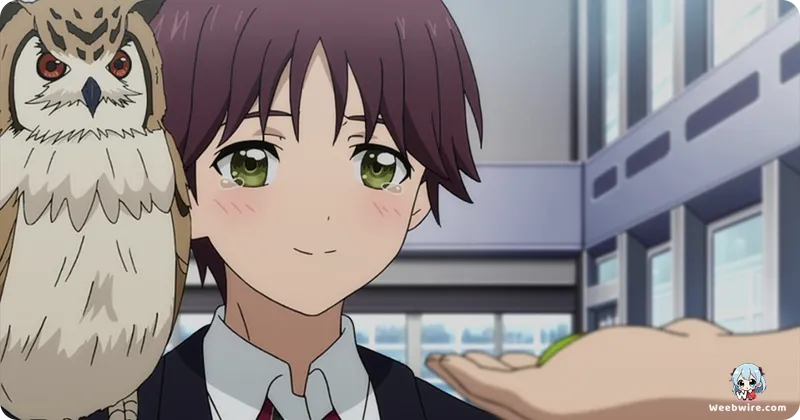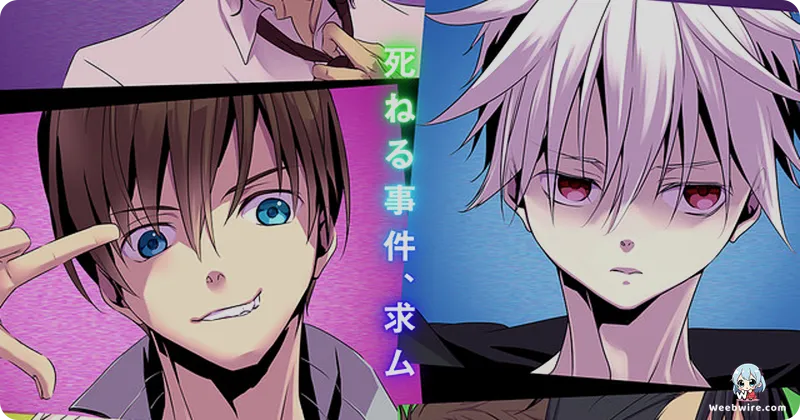Unveiling 'Trickster': How a Classic Detective's Spirit Ignited a Modern Anime Thriller

In a landscape often dominated by adaptations, the 2016 anime sensation, Trickster, emerged as a compelling original production. It masterfully blends a reverence for classic Japanese detective fiction with a bold leap into a futuristic, enigmatic world. While not a direct adaptation, Trickster brilliantly pays homage to the legendary works of Edogawa Ranpo, the pioneering force behind Japanese detective stories, especially his iconic series, "The Boy Detectives Club." This foundational nod to mystery, coupled with a distinctively modern, sci-fi, and psychological narrative, positions Trickster as a truly captivating subject.
Transporting viewers to a dystopian Tokyo in 203X, the series centers on the enigmatic Akechi Detective Agency, helmed by the brilliant yet eccentric Kogoro Akechi, as they navigate a myriad of perplexing cases. At the heart of the story is Yoshio Kobayashi, a boy burdened by a mysterious, seemingly immortal body that defies death, leaving him with a profound yearning for oblivion. His life takes an unforeseen turn upon encountering Kensuke Hanasaki, a vibrant member of the Boy Detectives Club, who perceives Kobayashi's extraordinary ability not as a curse, but as a unique power waiting to be harnessed for good. This initial encounter ignites a gripping narrative that delves deep into the complex themes of life, death, morality, and the very essence of humanity.
The Creative Vision Behind Trickster
A significant draw for the series lies in its exceptional creative lineage. The character designs, notably captivating and elegant, were brought to life by the celebrated manga artist duo Peach-Pit, renowned for their distinctive work on beloved series such as Rozen Maiden and Shugo Chara!. Their signature artistic style imbued Trickster's characters with a refined aesthetic, elevating the anime's visual appeal and seamlessly integrating its more fantastical elements with sophisticated design. This collaboration alone generated considerable anticipation among fans, promising a visually rich experience.
Adding another layer of intrigue and star power, the legendary Japanese musician and actor, Gackt, lent his distinctive voice to the elusive and formidable antagonist, the "Demon with Twenty Faces." This character, a recurring villain in Ranpo's original tales, is reimagined in Trickster as a shadowy figure orchestrating events from the periphery with a complex agenda. Gackt's chillingly charismatic vocal performance rendered the Demon an unforgettable presence, even with his often-indirect involvement in the plot. His casting was a remarkable detail that garnered widespread attention upon the anime's release, underscoring the production's ambition to craft a truly memorable experience.

Profound Themes and Expert Craftsmanship
Beyond the action and mystery, the series probes profound psychological depths, particularly through Kobayashi's unique condition. His inability to die is portrayed not as a superpower, but as an agonizing burden, leading to immense suffering and an ingrained desire for annihilation. This inverted perspective on immortality challenges conventional heroic narratives, compelling both characters and viewers to contemplate the true value of life and the inevitability of mortality. The poignant contrast between Kobayashi's despair and Hanasaki's unwavering optimism and determination to save him forms the emotional bedrock of the series, exploring the profound bonds of friendship and purpose.
TMS Entertainment, the esteemed studio behind Trickster, boasts a storied history in the anime industry, with a legacy spanning decades and an impressive portfolio including iconic titles like Lupin the 3rd, Detective Conan, and Fruits Basket. Their extensive experience across a diverse range of genres, from thrilling action-adventure to heartwarming dramas, provided a robust technical foundation for Trickster's intricate blend of mystery, sci-fi, and psychological drama. The studio's demonstrated ability to craft both intricate action sequences and poignant character moments ensured the series maintained consistent quality throughout its run, allowing its unique narrative to unfold effectively within its futuristic setting.
The futuristic Tokyo setting itself transcends mere backdrop, becoming an integral component of the narrative. Its advanced technology, gleaming skyscrapers, and subtle dystopian undertones create an atmosphere that perfectly complements the fusion of classic detective work and supernatural phenomena. The cityscape often mirrors the characters' internal states, from the bustling energy of Hanasaki's investigations to the cold, detached perspective of Kobayashi. This meticulous world-building adds significant depth to the series, elevating it beyond a simple mystery show.
In essence, Trickster distinguishes itself as an original anime that boldly reinterpreted a classic literary framework through a modern, genre-blending lens. Its unique premise, the distinctive character designs by Peach-Pit, the surprising casting of Gackt, and the studio's seasoned craftsmanship collectively weave a narrative that is both a thrilling detective story and a thought-provoking psychological drama. It stands as a testament to the creative freedom and innovation possible within original anime productions, offering a truly distinctive viewing experience for those seeking something beyond the conventional.
Credits
Trickster
Author
Edogawa Ranpo (original concept inspiration)
Cover Art
Peach-Pit
Studio
TMS Entertainment
Publisher
Bandai Visual
Producers





